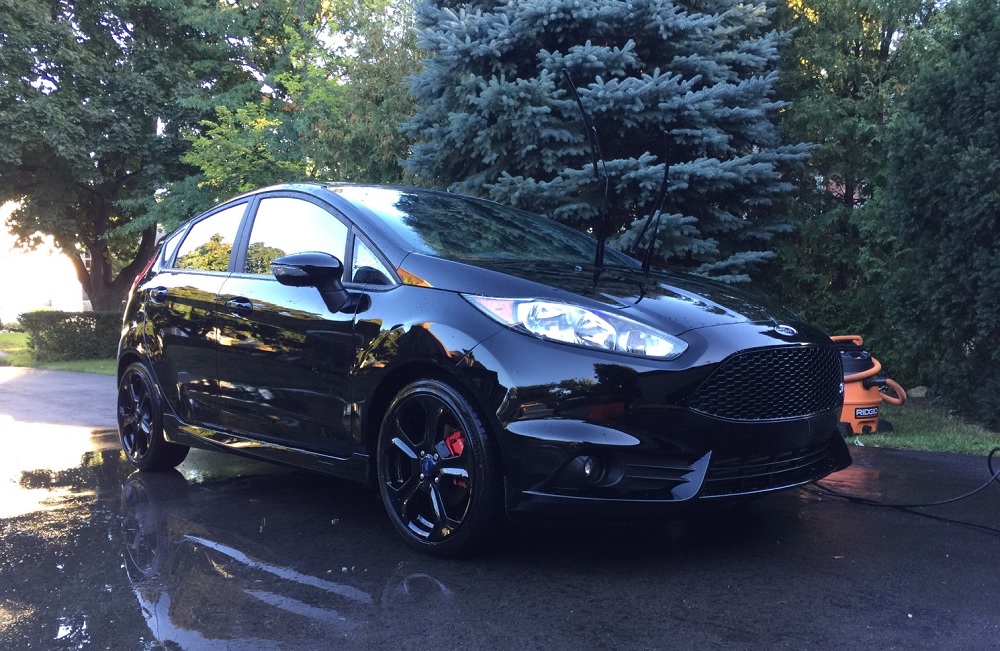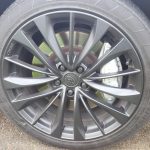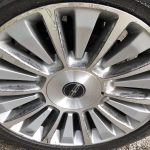In the intricate world of auto detailing, the choice of car wax plays a pivotal role in determining the longevity and brilliance of your vehicle’s finish. Among the array of options available, two heavyweights—Collinite 845 and Collinite 915—stand out, each boasting a loyal following of enthusiasts. In this detailed exploration, we unravel the layers of these automotive guardians to help you make an informed decision.
Understanding Collinite 845: A Glimpse into Time-Tested Excellence
Collinite 845, often considered the stalwart in car waxing, has earned its reputation through years of consistent performance. Let’s delve deeper into its key attributes:
1. Formulation and Composition: A Symphony of Protection
At the heart of Collinite 845 lies a carefully crafted blend of carnauba wax, polymers, and silicones. This unique formulation results in a liquid wax that seamlessly bonds with your car’s surface, forming a robust shield against contaminants, UV rays, and environmental pollutants.
2. Application and Ease of Use: Effortless Elegance
One of the standout features of Collinite 845 is its user-friendly nature. The liquid consistency allows for easy application, making it an ideal choice for both beginners and seasoned enthusiasts. With minimal effort, a radiant gloss can be achieved, transforming your vehicle into a showpiece on wheels.
3. Durability and Longevity: The Battle Against Time
Collinite 845’s formidable defense mechanism extends beyond its initial application. The wax creates a protective layer that withstands the test of time, resisting fading, oxidation, and the wear and tear inflicted by the elements.
4. Versatility in Application: More Than Just Paint
Beyond its primary role as a paint protectant, Collinite 845 proves versatile. It can be applied to various automotive surfaces, including chrome, metal, and fiberglass, adding an extra layer of defense to all parts of your vehicle.
Decoding Collinite 915: A New Player with Distinct Strengths
In the shadow of its predecessor, Collinite 915 emerges as a potent contender, equipped with its own set of strengths.
1. Unique Composition: Pure Carnauba Brilliance
Collinite 915 prides itself on its No. 1-grade pure carnauba wax composition. This premium ingredient elevates the wax’s performance, resulting in a finish that rivals the depth and brilliance achieved by professional detailing.
2. Application Mastery: A Bond Beyond Surface
While Collinite 915 demands a bit more finesse during application compared to its predecessor, the effort pays off. The wax forms a unique bond with the car’s surface, creating a resilient layer that enhances the paint’s natural luster.
3. Endurance Under Extremes: Weathering the Storm
Collinite 915 stands as a beacon of endurance, particularly under extreme weather conditions. From scorching heat to freezing cold, this wax remains steadfast, providing unparalleled protection against the harshest elements.
4. Water Beading Effect: A Testament to Quality
An often-overlooked aspect of Collinite 915 is its remarkable water beading effect. This not only adds an aesthetic dimension but also contributes to the wax’s protective qualities by preventing water from lingering on the surface.
The Showdown: Collinite 845 vs. 915
1. Gloss Intensity
Winner: Collinite 915
When it comes to achieving an unparalleled depth of gloss, Collinite 915 takes the crown. Its pure carnauba wax composition creates a lustrous finish that captures and reflects light, giving your car a showroom-worthy shine.
2. Ease of Application
Winner: Collinite 845 (See Also: How Long Does Car Wax Take to Dry? Tips for Quick and Effective Drying)
For those who prioritize a hassle-free application process, Collinite 845 steals the spotlight. Its liquid form ensures a smooth and straightforward waxing experience, making it an ideal choice for DIY enthusiasts.
3. Durability and Longevity
Tie: Collinite 845 and 915
Both waxes demonstrate exceptional endurance. Whether it’s the unforgiving sun or the relentless rain, both Collinite 845 and 915 stand their ground, providing lasting protection that goes beyond mere cosmetic enhancement.
Making the Choice: What’s Right for You?
In the Collinite 845 vs. 915 debate, the winner ultimately depends on your preferences and priorities. If you seek an effortless application with a reliable shine that withstands the test of time, Collinite 845 is the go-to. On the other hand, if you crave an intense gloss that weathers diverse weather conditions with resilience, Collinite 915 emerges as the champion.
Beyond the Basics: Tips and Tricks
As you embark on your car waxing journey, consider these additional insights:
1. Preparation is Key:
Before applying any wax, ensure your vehicle’s surface is clean and free from contaminants. A thorough wash and, if necessary, a clay bar treatment can pave the way for optimal wax adhesion.
2. Layering for Enhanced Protection:
For those seeking an extra layer of defense, both Collinite 845 and 915 allow for layering. Applying multiple coats, with proper curing time in between, can amplify the protective qualities of the wax.
3. Frequency of Application:
The frequency of wax application depends on various factors, including climate, usage, and personal preference. A general rule of thumb is to wax your car every 3 to 6 months, but more frequent applications may be beneficial in harsher conditions.
Expert Tips for Mastering Collinite 845 vs. 915: Elevate Your Car Waxing Game
When it comes to the showdown between Collinite 845 and 915, mastering the art of car waxing requires finesse. Here are expert tips to help you make the most of these exceptional auto waxes and achieve a finish that turns heads.
1. Prep Like a Pro: The Foundation of a Lasting Shine
Before diving into the application of Collinite 845 or 915, ensure your vehicle’s surface is immaculate. A thorough wash, followed by a clay bar treatment if needed, sets the stage for optimal wax adhesion. A clean canvas ensures the wax can work its magic without interference from contaminants.
2. Layering for Intensified Protection
Both Collinite 845 and 915 allow for layering, providing an opportunity to enhance the protective qualities of the wax. Applying multiple coats, with adequate curing time in between, creates a robust shield against the elements. Layering is particularly beneficial for those looking to maximize longevity and resilience.
3. The Importance of Proper Application Techniques
While Collinite 845 is known for its user-friendly nature, Collinite 915 demands a bit more finesse. Regardless of the chosen wax, apply it in thin, even coats. Use a quality applicator pad and work in small sections to ensure thorough coverage. A well-executed application ensures a uniform finish and maximizes the wax’s effectiveness. (See Also: Where Can I Go to Shampoo My Car Seats? Top Auto Detailing Spots Revealed)
4. Weather Considerations: Choose Wisely
Both Collinite 845 and 915 boast resilience against various weather conditions. However, consider the ambient temperature during application. It’s generally advisable to apply wax in moderate temperatures, avoiding direct sunlight and excessively hot or cold conditions. This allows for optimal bonding and curing.
5. Regular Maintenance: Sustain the Brilliance
Waxing isn’t a one-time affair. To preserve the brilliance achieved with Collinite 845 or 915, embrace regular maintenance. Periodic washes using a pH-balanced car shampoo, coupled with quick detailer applications, contribute to the wax’s longevity and keep your vehicle looking its best between waxing sessions.
6. Tailor Your Choice to Your Climate
The choice between Collinite 845 and 915 can be influenced by your local climate. If you reside in an area with harsh weather conditions, Collinite 915’s exceptional endurance might be the winning factor. Conversely, if ease of application is a priority, especially in milder climates, Collinite 845 might be your top pick.
7. Experiment with Application Techniques
Car waxing is an art, and each enthusiast may have their preferred techniques. Don’t hesitate to experiment with application methods. Some swear by circular motions, while others prefer straight lines. Find what works best for you to achieve the most even and appealing finish.
8. Invest in Quality Applicators and Microfiber Towels
The tools you use are as crucial as the wax itself. Invest in high-quality applicator pads and microfiber towels. These not only facilitate smooth application but also minimize the risk of introducing swirls or scratches to your vehicle’s finish.
9. Mind the Curing Time
After applying Collinite 845 or 915, allow sufficient time for curing. Rushing this step can compromise the wax’s effectiveness. Follow the manufacturer’s recommendations for curing times, ensuring the wax has ample opportunity to bond with the paint surface.
10. Customize Your Waxing Schedule
While general guidelines suggest waxing every 3 to 6 months, your specific circumstances may warrant a customized schedule. Factors such as daily commuting, exposure to environmental contaminants, and personal preferences can influence the frequency of wax applications. Tailor your waxing schedule to suit your car’s unique needs.
By incorporating these expert tips into your car waxing routine, you’ll not only navigate the Collinite 845 vs. 915 debate more confidently but also elevate your overall auto detailing prowess. Remember, the key lies not just in the choice of wax but in the meticulous approach you take to preserve and enhance your vehicle’s aesthetic allure.
FAQs: Navigating the Collinite 845 vs. 915 Conundrum
When it comes to choosing the right car wax, questions abound, especially in the showdown between Collinite 845 and 915. Here, we address some frequently asked questions to guide you through the maze of auto waxes and help you make an informed decision.
Q1: What distinguishes Collinite 845 from Collinite 915?
Both Collinite 845 and 915 are renowned car waxes, but they differ in their formulations. Collinite 845 boasts a blend of carnauba wax, polymers, and silicones, while Collinite 915 prides itself on No. 1-grade pure carnauba wax.
Q2: Which wax offers a deeper and more intense gloss?
Collinite 915 takes the crown in this department. Its pure carnauba wax composition creates a lustrous finish that captures and reflects light, resulting in a showroom-worthy shine.
Q3: Is one wax easier to apply than the other?
Yes, Collinite 845 is often considered more user-friendly due to its liquid form. It allows for easy application, making it an ideal choice for those seeking a hassle-free waxing experience.
Q4: How do Collinite 845 and 915 fare in extreme weather conditions?
Both waxes demonstrate exceptional endurance. They stand resilient in the face of harsh weather conditions, providing lasting protection against the elements, whether it’s scorching heat or freezing cold. (See Also: Dr. ColorChip vs. Chipex: Choosing the Best Car Paint Repair Solution)
Q5: Can I layer Collinite 845 or 915 for added protection?
Yes, both Collinite 845 and 915 allow for layering. Applying multiple coats, with adequate curing time in between, enhances the protective qualities of the wax, providing an extra layer of defense against environmental contaminants.
Q6: Which wax is more suitable for different surfaces besides paint?
Collinite 845 proves versatile, making it suitable for various automotive surfaces, including chrome, metal, and fiberglass. Collinite 915, while primarily used on paint, can also be applied to chrome and other non-porous surfaces.
Q7: How often should I wax my car with Collinite 845 or 915?
The frequency of wax application depends on factors like climate, usage, and personal preference. Generally, waxing every 3 to 6 months is recommended, but more frequent applications may be beneficial in harsh conditions.
Q8: Can I mix Collinite 845 and 915 for a customized waxing experience?
While it’s technically possible to mix the two waxes, it’s not recommended. Each wax is formulated to deliver specific results, and combining them may compromise their individual effectiveness.
Q9: Do these waxes leave a water beading effect?
Yes, especially in the case of Collinite 915. The wax’s unique formulation contributes to a remarkable water beading effect, adding an aesthetic dimension and enhancing its protective qualities.
Q10: How can I ensure the best results when using Collinite 845 or 915?
Preparation is key. Start with a clean surface, use quality applicators and microfiber towels, follow proper application techniques, and allow sufficient curing time. Regular maintenance and customization based on your climate and preferences contribute to optimal results.
These FAQs aim to demystify the Collinite 845 vs. 915 debate and provide valuable insights for anyone looking to achieve a superior shine for their vehicle.
Conclusion: The Final Verdict
Choosing between Collinite 845 and 915 is akin to selecting the perfect tool for a job. Each has its strengths, and the ideal choice aligns with your specific needs and expectations. Whether you opt for the veteran performer, Collinite 845, or the contender, Collinite 915, rest assured your car will bask in a brilliant shine that goes beyond aesthetics— it’s a testament to your commitment to preserving and enhancing your vehicle’s allure.
In the realm of auto waxes, the Collinite 845 vs. 915 debate remains subjective, highlighting the diverse preferences of car enthusiasts. As you embark on the journey to elevate your vehicle’s aesthetics, remember that both these waxes share a common goal: to make your car shine brilliantly on the open road. So, go ahead, indulge in the art of waxing, and let your vehicle radiate the brilliance it deserves.



